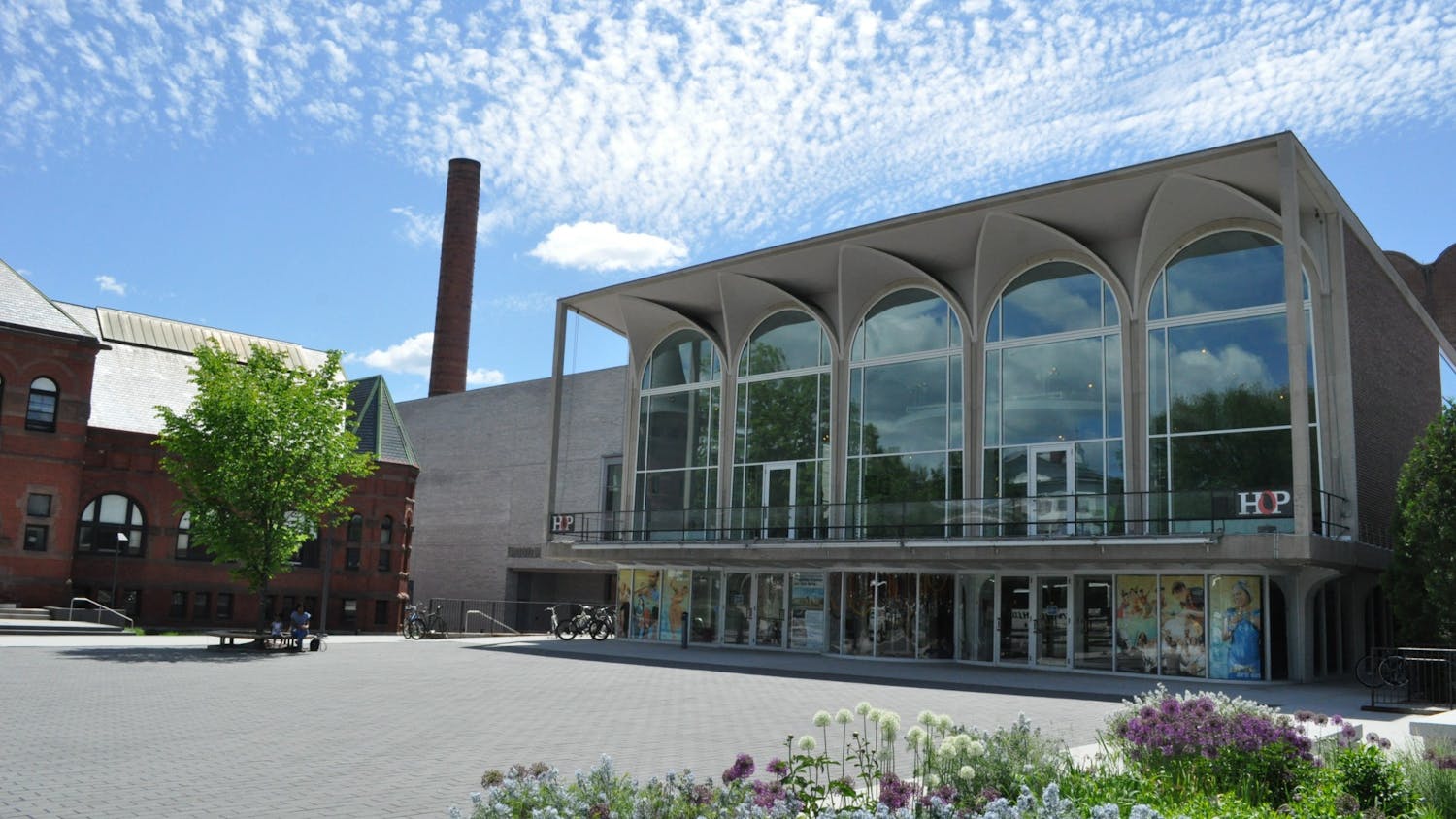"I see a tree." "Where? I see a house, and a fence, along this side." The woman swept her arm along the right corner of the canvas. Her friend tilted her head inquisitively, attempting to find the domestic image her friend had discovered in the painting.
An accomplished landscapist and native New Englander, Aho primarily paints nature scenes, mostly from memory after walks in the woods.
In an interview with The Dartmouth, Aho explained, "If there is an inspiration, it is about an actual experience and the way that filters through the veils of memory. There is something wonderful about the way the memory can wander."
Aho's work has been on display at the Hood Museum in the past, and one of his pieces now holds a place in a permanent collection at the Museum of Fine Arts in Boston, Mass. The Spheris Gallery has also hosted Aho before.
Gallery director Cynthia Reeves raved about Aho's ability to challenge himself, saying "I've been working with him now for about 12 years, and over that period of time we've seen such a remarkable and continuous evolution of his thought."
Aho's work once focused on sky and clouds, and now has shifted to landscape. Reeves noted that Aho's artwork celebrates some aspects in nature that are not always seen as beautiful, such as clear-cutting ice flows breaking up and forests rotting.
"With a fresh perspective you can find remarkable and deep beauty in the region in which we live," she explained, "and I think this is a great trigger to nudge one to look again."
I stood with the woman examining the painting, and I, too, tried to find a new perspective on "Nightfall" (2008), which depicts a wood at dusk. At first glance, it's difficult to decipher the subject of the painting. Lush greens and burnt oranges are slashed across the canvas to create an abstract look, while the thick application of the paint forms surfaces similar to those in a woodland scene.
Aho acknowledges this aspect of his work, describing his artistic style as "casual and careless in application, but accurate in its perception."
As you move closer to the painting, the image blurs and you notice each individual, spontaneously applied brush stroke.
Lisa Paulson, a patron of Aho's and an artist herself, told me that she used to be drawn to Aho's depiction of clouds, but is now impressed by his combination of the abstract with the impressionistic.
Aho told me he strives to capture the effect of the wood scenes as much as their appearance. He succeeds. You feel the energy of the woods; this is not a serene woodland scene, but rather a dynamic example of the continuous cycle of death and rebirth in nature.
Many of the paintings in the gallery share this subject and theme. In fact, the exhibit becomes tedious at times, with painting after painting glorifying uprooted trees and decaying wood.
Some canvases, however, highlight other New England scenes. Whitewashed icehouses and barns look stark, but the soft lines of the surrounding foliage coupled with the play of light and shadows lend a familiarity to the painting.
"I want people to come away with a sensation of reaching into their own memory, and how they may share similar experiences of the world," Aho said.
He claims to understate his paintings specifically for this purpose, and this becomes apparent in his works such as "White Summer Barn" (2008).
While a few such paintings of buildings provide some variety, they are not enough to give the show sufficient scope. Aho's exhibit would benefit from a wider array of subjects, to show us the breadth of his skill more fully.
Dartmouth students will recognize Aho's scenes, and appreciate the show despite its homogeneity. We've seen that split tree on a hike, or the ice cracking across the river, but maybe we never gave these images a second glance. Aho invites us to revisit scenes preserved in memory, and urges us to recognize the unassuming beauty of nature at its most transitional stages.
Eric Aho's latest exhibition runs through Nov. 19 at the Spheris Gallery. The gallery, located at 59 South Main St,. is open Tuesday through Saturday, from 11 a.m. to 5:30 p.m.




